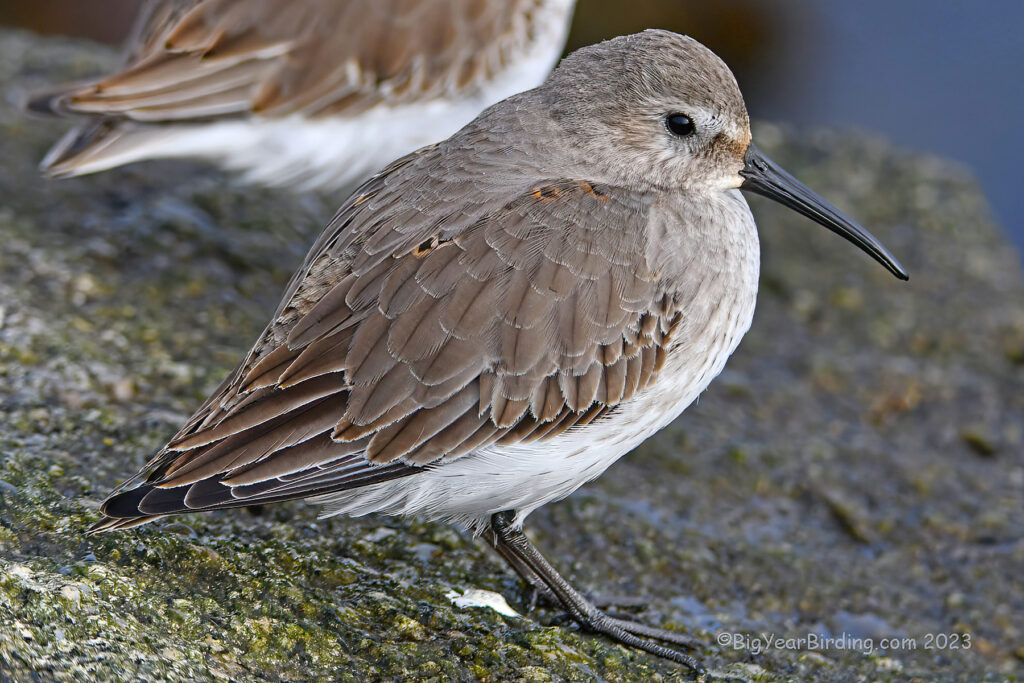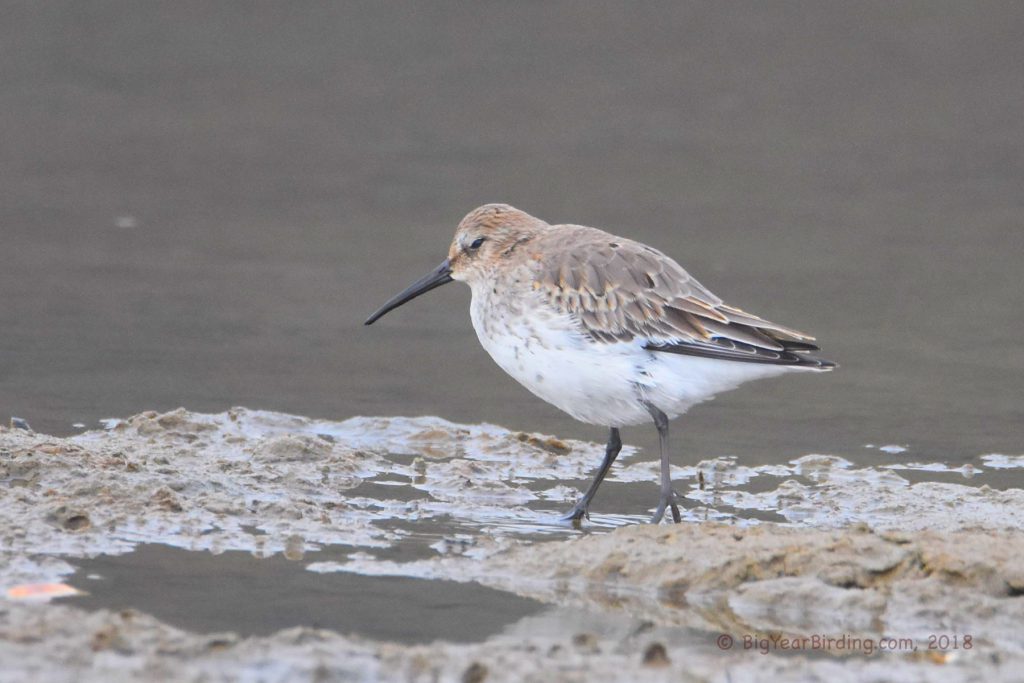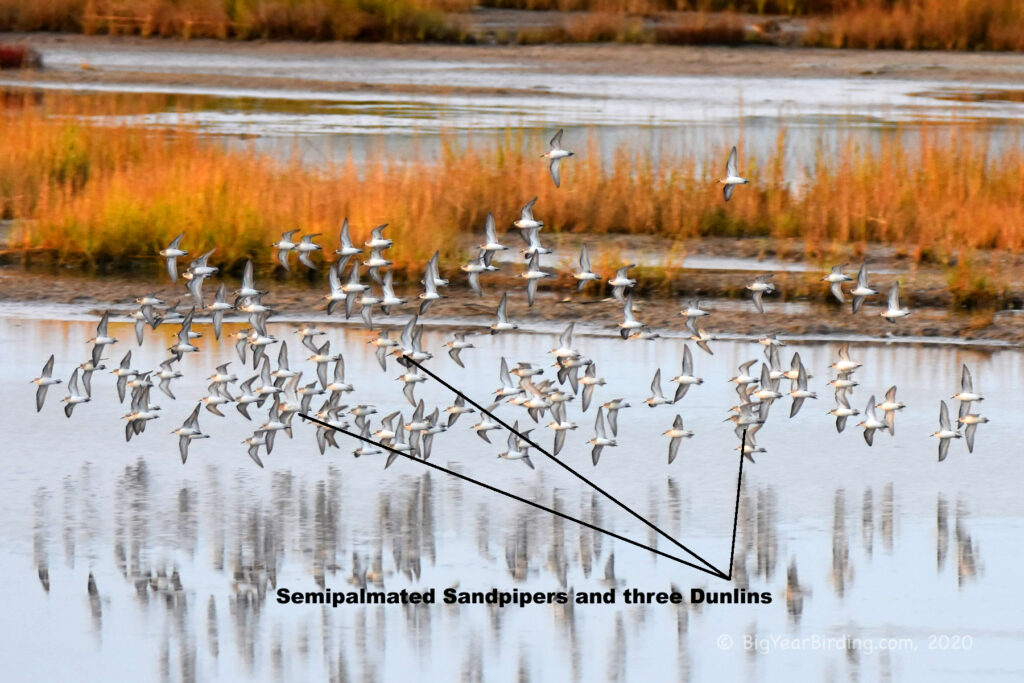
The Dunlin (Calidris alpina) is a small shorebird that breeds in the arctic tundra of North America, Europe, and Asia. It measures approximately 7.5 to 8.75 inches (19-22 cm) in length and weighs between 1.4 to 2.2 ounces (40-63 grams). Its wingspan ranges from 15 to 16.5 inches (38-42 cm).
Dunlins are highly migratory birds, and their breeding range extends from Alaska to Greenland in North America, and from Scandinavia to Russia in Europe and Asia. During migration, they can be found along the coastlines of North and South America, Africa, and Asia, and occasionally in inland wetlands. In the winter months, they are known to congregate in large flocks on mudflats, estuaries, and coastal lagoons.
Dunlins are recognized by their brownish-gray upperparts and white underparts. They have a distinctive black patch on their belly that becomes more prominent during the breeding season. During the winter months, their plumage becomes more drab, and their bellies are not as dark. They have a relatively long, thin bill, which is slightly downward-curved. In flight, they show a white wedge on their rump, and their wings have a white stripe along the trailing edge.
During migration, Dunlins can be seen in a variety of habitats, from coastal mudflats and estuaries to inland lakes and wetlands. They are highly gregarious birds, and during the winter months, they can form flocks of thousands of individuals. They feed on invertebrates such as worms, mollusks, and crustaceans, which they probe for with their long, thin bills. Dunlins are known for their quick movements and are often seen running rapidly along the water’s edge.

In conclusion, the Dunlin is a small migratory shorebird that breeds in the arctic tundra of North America, Europe, and Asia. It measures approximately 7.5 to 8.75 inches (19-22 cm) in length and weighs between 1.4 to 2.2 ounces (40-63 grams). During migration, they can be found in a variety of habitats along the coastlines of North and South America, Africa, and Asia, and in inland wetlands. They are recognized by their brownish-gray upperparts and white underparts, with a distinctive black belly patch that becomes more prominent during the breeding season. Dunlins are highly gregarious birds that feed on invertebrates and are known for their quick movements.

